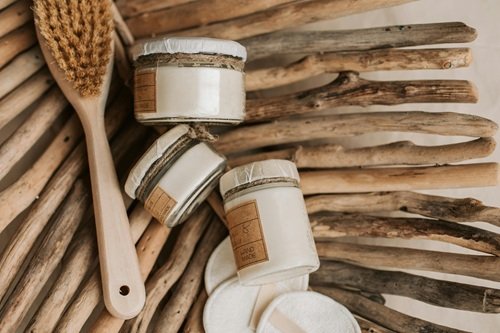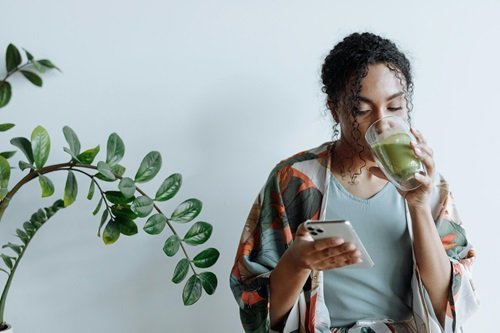Over the past decade, the wellness industry has exploded with trends that promise a better, healthier, and more “natural” way of living. Among the most persistent terms used is “toxin free.” It appears on everything — from skincare products and cleaning sprays to food packaging and supplements. But as we step into 2025, a growing number of experts and consumers are asking: Is “toxin free” really meaningful, or is it just a catchy marketing buzzword?


💡 What Does “Toxin Free” Mean?
At its core, “toxin free” is meant to suggest that a product or lifestyle avoids harmful chemicals or substances. But here’s the catch — the term isn’t regulated by most government health agencies.
In many countries, including the U.S., there is no legal definition of “toxin free.” This means that brands can use the term however they want, even if the product contains ingredients that may be questionable or lack scientific support for safety or danger.
In 2025, consumers are savvier, and the vague use of terms like “clean,” “natural,” or “non-toxic” is under more scrutiny than ever before.
🌱 The Rise of the Clean Living Movement
The clean living movement encourages people to eliminate or minimize exposure to potentially harmful substances found in:
- Food (pesticides, preservatives, additives)
- Skincare and cosmetics (parabens, phthalates, sulfates)
- Cleaning products (bleach, ammonia, synthetic fragrances)
- Plastics and packaging (BPA, microplastics)
The idea is to support overall wellness by reducing toxic burden — the accumulation of environmental and chemical toxins in the body over time.
But critics argue that this movement often leans into fear-based marketing, lacks scientific nuance, and sometimes creates unnecessary anxiety over everyday exposures.
🔍 Science vs. Hype: Are Toxins Actually a Problem?
Yes — and no.
✅ The Truth: Our World Has Toxins
It’s true that we’re exposed daily to a variety of chemicals in our environment, many of which have been linked to:
- Hormonal disruption
- Skin irritation
- Respiratory issues
- Neurological or developmental effects (in rare or prolonged cases)
Examples of concerning substances include:
- Formaldehyde (found in some hair treatments)
- PFOAs (used in non-stick cookware)
- Parabens (preservatives in cosmetics)
- Phthalates (used to make plastics flexible)
❌ The Myth: Your Body Is Full of Dangerous Toxins
Here’s where it gets complicated. Many “detox” marketing claims suggest that your body is full of harmful waste that needs to be flushed out with supplements, green juices, or specific products. But your liver, kidneys, lungs, and skin already detox your body naturally.
Unless you have a medical condition or have been exposed to harmful levels of a toxin (e.g., heavy metals, mold), you likely don’t need a “cleanse.”


📈 Clean Living in 2025: What’s New?
In 2025, the clean living movement is evolving. Rather than relying on vague claims and pseudoscience, evidence-based wellness is on the rise.
🔬 1. Ingredient Transparency
Consumers now demand full ingredient lists, with clear explanations of what each component does — not just labels like “natural” or “toxin free.”
📱 2. Smart Labeling & Apps
Mobile apps like Think Dirty, EWG’s Healthy Living, and Yuka allow users to scan product barcodes and get a health safety score in seconds.
🧪 3. Science-Backed Detox Support
Instead of expensive cleanses, practitioners now recommend:
- Eating more cruciferous vegetables (like broccoli and kale)
- Supporting liver health through diet and hydration
- Infrared saunas or sweating through exercise
🌍 4. Sustainable, Non-Toxic Living
The overlap between clean living and sustainability is growing. In 2025, many consumers equate non-toxic with eco-friendly, leading to a surge in:
- Refillable cleaning products
- Compostable packaging
- Plastic-free cosmetics
Also Read: 2025 Fitness Trend: 7 Reasons Cold Plunge Tubs Are Going Mainstream | The No-Oil Diet: 6 powerful Surprising Benefits for Your Body and Skin | Silent Walks: Why Gen Z Is Ditching Headphones for Mindful Mornings in 2025
🚫 7 Common Myths About “Toxin Free” Living
❌ 1. Natural always means safe
Not true. Poison ivy is natural. So is arsenic. Some synthetic ingredients are safer than “natural” ones.
❌ 2. All chemicals are bad
Everything is made of chemicals — including water. The key is dosage, exposure, and context.
❌ 3. If it’s sold in stores, it must be safe
Not necessarily. Many personal care products are not regulated as strictly as pharmaceuticals.
❌ 4. Detox teas and juices flush toxins
There is no clinical evidence that detox teas or juice cleanses remove toxins. They may hydrate you or provide nutrients, but your organs do the real detoxing.
❌ 5. Toxin free = allergen-free
A product can be labeled “non-toxic” and still contain allergens like fragrances, nuts, or gluten.
❌ 6. Expensive = safer
Not always. Some budget brands offer cleaner formulations than luxury ones. Price doesn’t equal purity.
❌ 7. If it’s labeled “toxin free,” it’s totally safe
Again — this term is not legally regulated. Always read ingredient lists and do your own research.
🧠 How to Practice Clean Living Without Obsessing
Clean living shouldn’t be about fear — it should be about making informed, balanced choices. Here’s how to do that in 2025:
✅ 1. Follow the 80/20 Rule
Make clean choices 80% of the time. Don’t stress over the occasional exposure to a scented candle or takeout container.
✅ 2. Switch One Product at a Time
Start with what you use most often — e.g., deodorant, moisturizer, or kitchen cleaner — and upgrade gradually.
✅ 3. Focus on What You Eat
Your diet has a far greater impact on your health than the occasional cosmetic ingredient. Eat real, whole foods and minimize ultra-processed snacks.
✅ 4. Ventilate Your Home
Indoor air can be more polluted than outdoor air. Open windows, use HEPA filters, and avoid synthetic air fresheners.
✅ 5. Support Your Body’s Natural Detox Pathways
- Stay hydrated
- Move your body regularly
- Eat fiber-rich and antioxidant-rich foods
- Prioritize sleep


👀 How Brands Are Adapting in 2025
In response to consumer demand for transparency and safety, brands are:
- Formulating without the “Toxic 12”: a group of common harmful ingredients
- Using biodegradable packaging
- Certifying through third parties like EWG Verified, USDA Organic, or Made Safe
- Investing in clean lab testing and publishing results
Expect to see more “radical transparency” in marketing — where brands not only tell you what’s not in their products but why they chose what is.
🧴 Real Product Categories to Watch in 2025
🧼 1. Non-toxic cleaning products
Popular brands: Branch Basics, Blueland, Seventh Generation
🧴 2. Toxin free skincare & makeup
Look for: EWG Verified, cruelty-free, fragrance-free
🥗 3. Clean-label food & supplements
Minimal ingredients, organic, non-GMO
🛁 4. Home detox tools
Air purifiers, water filters, and sustainable cookware
🧭 Final Thoughts: Is “Toxin Free” Meaningless?
Not entirely — but it’s definitely misused.
The term “toxin free” in 2025 should be treated as a starting point, not a guarantee. Instead of blindly trusting marketing labels, consumers must:
- Dig deeper into ingredients
- Rely on trusted resources
- Balance knowledge with peace of mind
Clean living is powerful — but only when it’s informed, intentional, and realistic.
Also Read: What is 75 hard challenge? | HOW YOGA BENEFITS YOU IN EVERYDAY LIFE | WHAT IS CARB CYCLE – FAST FAT BURNING PROCESS! | Fittheories | 10 Powerful Reasons Why Outdoor Sports Are Essential for Family Bonding